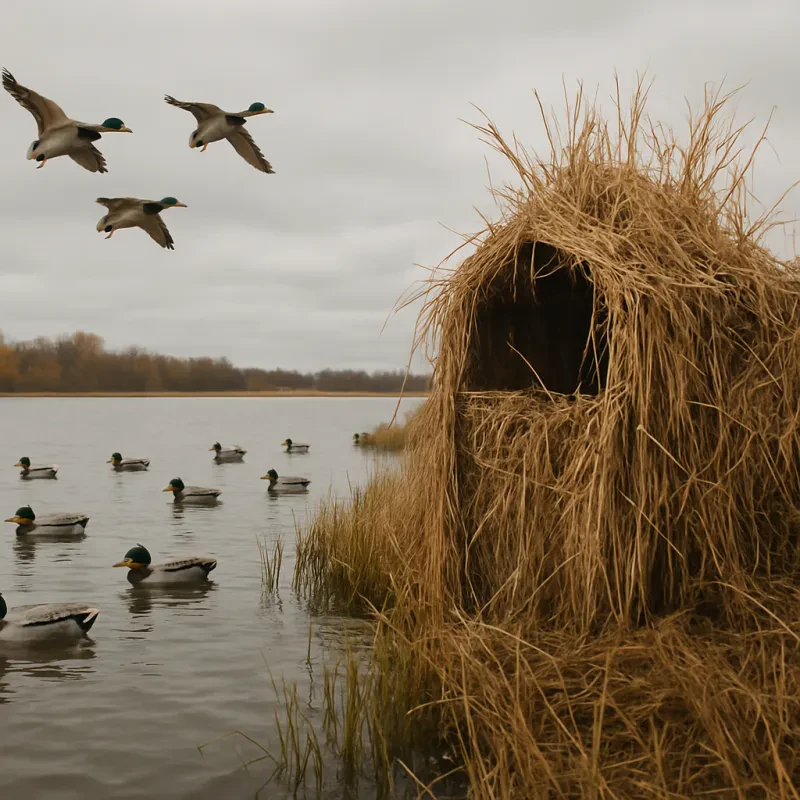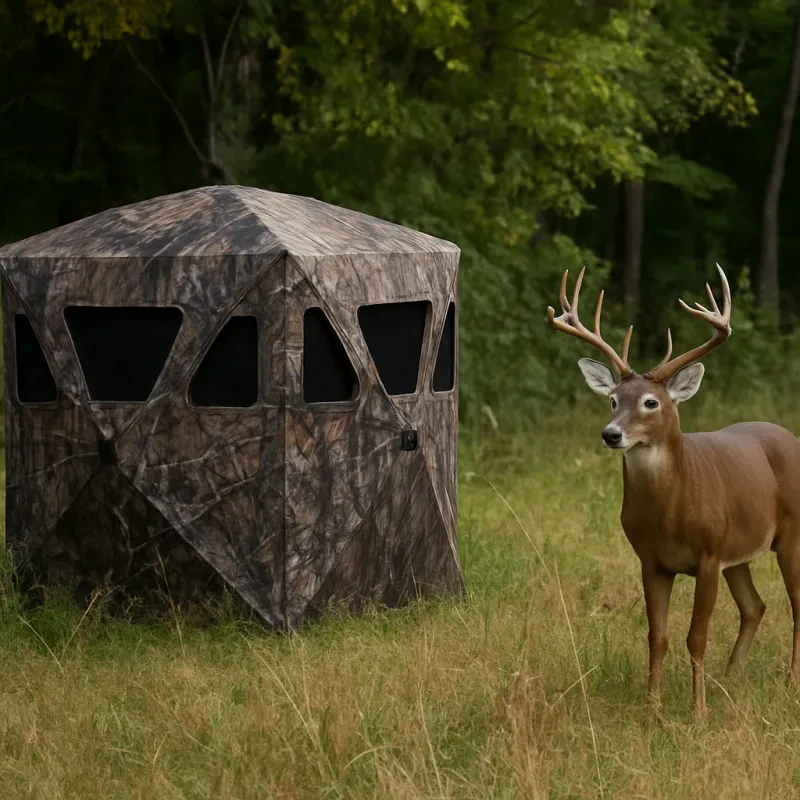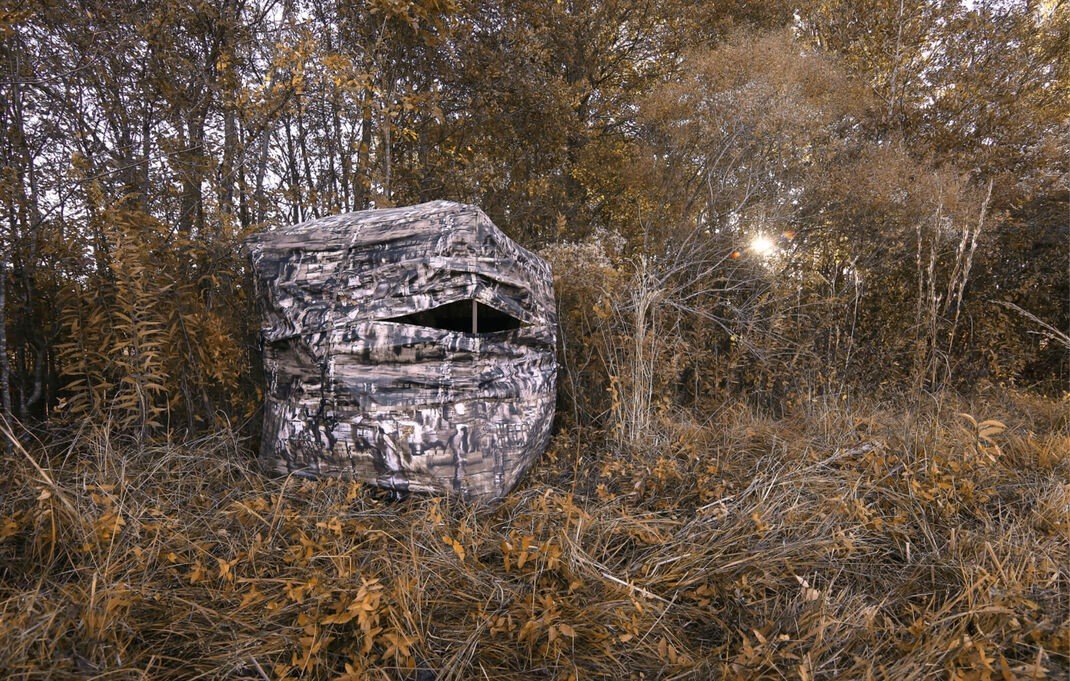When it comes to weatherproofing your hunting blind, having the right features can make all the difference. One key aspect to consider is insulation. Insulated walls help regulate the temperature inside your blind, keeping you warm during chilly mornings or cool when the sun is blazing. Look for blinds with insulated panels or add insulation yourself to enhance overall comfort.
An essential feature for weatherproofing your hunting blind is a waterproof exterior. This protects your interior from rain, snow, and other moisture, ensuring you stay dry while hunting. Many modern blinds come with waterproof fabrics and seams sealed with appropriate materials to prevent leakage. Be sure to check the specifications before making your purchase.
Another important aspect to consider is proper ventilation. While it's crucial to maintain a warm or cool environment, adequate airflow is necessary to prevent condensation and humidity buildup, which can cause discomfort and dampness. Look for blinds with adjustable vents or tiny windows to allow for optimal airflow without compromising your concealment.
Lastly, don't underestimate the power of durable flooring. A sturdy, moisture-resistant floor not only adds to the comfort of your hunting blind but also helps prevent mold and mildew from forming. Consider investing in non-slip flooring materials that can withstand the elements, making it easier to move around quietly while you wait for the perfect shot. Altogether, focusing on these features will greatly improve your efforts in weatherproofing your hunting blind and enhance your overall hunting experience.
Best Materials for Ultimate Protection
When it comes to weatherproofing your hunting blind, the choice of materials can significantly impact its durability and effectiveness. Selecting the right materials not only protects your investment but also ensures that you remain comfortable and concealed while you wait for your game. Here are some of the best materials you can consider for ultimate protection.
First on the list is heavy-duty canvas. This material is known for its breathability and water resistance, making it a classic choice for hunting blinds. Heavy-duty canvas can withstand harsh weather conditions and is often treated with waterproof coatings to enhance its protective qualities. Additionally, its natural appearance helps blend your blind into the surrounding landscape, making it less noticeable to wildlife.
Another excellent option for weatherproofing your hunting blind is PVC-coated polyester. This material is lightweight yet extremely durable, providing excellent resistance to water and UV rays. Its easy-to-clean surface is also a big plus, as it can withstand mud and dirt from outdoor adventures, ensuring your blind remains in top condition. Furthermore, many hunters appreciate its ability to retain warmth during chilly mornings.
Lastly, consider using reinforced vinyl for the floor and windows of your hunting blind. This material is not only impervious to water but also resistant to tears and punctures. By using reinforced vinyl for these critical areas, you can prevent moisture from seeping in, ensuring that your blind remains comfortable and dry. Additionally, you can take advantage of its clear options for windows, allowing for optimal visibility while remaining concealed.
Simple Maintenance Tips for Longevity
To ensure your hunting blind remains effective and lasts for years to come, regular maintenance is key. Simple upkeep tasks can go a long way in weatherproofing your hunting blind and preventing costly repairs down the line. Start by inspecting your blind for any signs of wear and tear. Look for rips, tears, or loose seams in the fabric and address these issues promptly to maintain your blind's integrity.
Next, consider applying a weather-resistant treatment to the exterior of your blind. Many products are specifically designed to enhance the durability of the materials used in hunting blinds. This added layer of protection not only keeps moisture at bay but also helps resist mold and mildew growth, further contributing to the weatherproofing your hunting blind requires.
Don’t forget about the interior of your blind as well. Regularly check for any signs of moisture or dampness. Keeping the inside dry and clean is crucial for maintaining a comfortable hunting environment. Additionally, make sure to clear any debris that may accumulate around the entrance and windows to avoid attracting unwanted pests.
Lastly, pay attention to the structure supporting your blind. Ensure that the framework is stable and that any anchors or tie-downs are secure. A strong foundation is essential for weatherproofing your hunting blind, especially in windy conditions. By following these simple maintenance tips, you can ensure a longer life for your hunting blind and an overall better hunting experience.
Essential Accessories for Any Weather
When it comes to Weatherproofing Your Hunting Blind, having the right accessories can make all the difference. Regardless of the weather conditions, essential add-ons can keep you comfortable and focused on the hunt. From protection against rain to insulation in colder temperatures, these accessories cater to all seasons.
One of the must-have accessories is a high-quality tarp or rain cover. This provides an extra layer of protection against unexpected downpours, ensuring that you stay dry and your gear remains protected. Look for waterproof materials that easily attach to your blind, allowing for quick adjustments when the weather turns sour.
In colder months, consider adding insulated walls or thermal liners to your hunting blind. These not only trap heat but also reduce the chill that can seep in through gaps and openings. Insulated accessories can significantly enhance your comfort level, enabling you to stay out longer even when temperatures drop. Furthermore, portable heaters designed for use in confined spaces can add just the right amount of warmth without compromising safety.
Another essential accessory is a ground mat. This not only helps keep mud and dirt from getting into your blind but also adds a layer of insulation from the cold ground. A good ground mat can make sitting for long periods much more comfortable, allowing you to focus on the hunt rather than fidgeting in discomfort.


